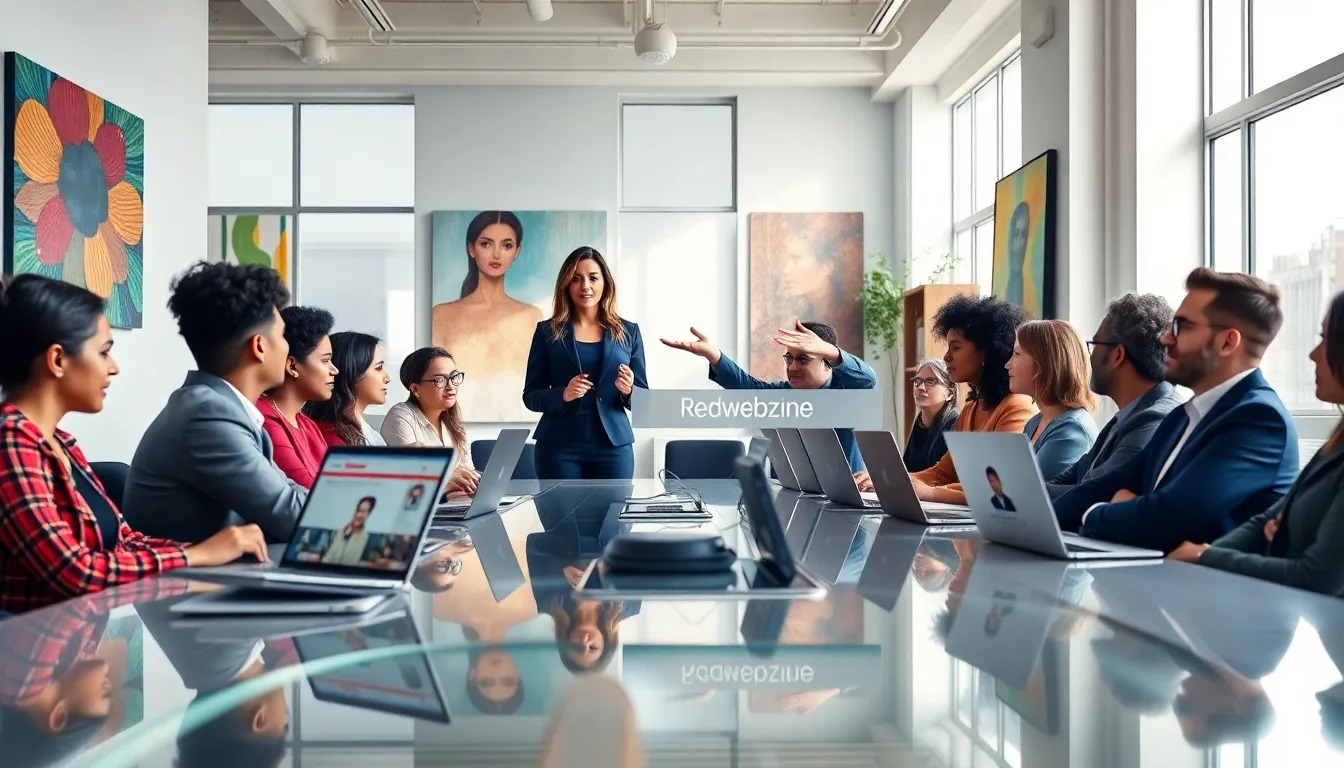In a world buzzing with information, ensuring English Language Learners (ELLs) don’t just decode words but truly understand them is crucial. Imagine teaching someone to drive but only letting them steer without ever explaining traffic signs. That’s what happens when reading instruction focuses solely on decoding. ELLs need comprehension skills to navigate the vast landscape of language.
Table of Contents
ToggleUnderstanding ELLs and Reading Comprehension
Teaching English Language Learners (ELLs) involves more than word decoding; it focuses on fostering genuine understanding. Prioritizing reading comprehension skills enhances their overall language proficiency.
The Importance of Reading Comprehension
Reading comprehension serves as a crucial skill for ELLs. It enables students to engage with texts meaningfully, facilitating deeper learning experiences. Students who comprehend improve their ability to analyze and synthesize information, which promotes critical thinking. Strong comprehension also leads to better academic performance across subjects. Engaging with diverse texts broadens their knowledge and cultural understanding.
Differences Between Decoding and Comprehension
Decoding refers to the ability to sound out written words, while comprehension involves grasping their meanings. ELLs can learn to decode words without fully understanding them. This disconnect can hinder their academic success. Comprehension requires integrating background knowledge with language skills to make sense of texts. Focusing on both decoding and comprehension is essential for developing well-rounded literacy skills. Striking a balance between these components nurtures holistic language development.
Strategies for Developing Reading Comprehension
Reading comprehension skills are essential for English Language Learners (ELLs) to engage with texts meaningfully. Effective strategies help ensure ELLs achieve deeper understanding beyond simple word decoding.
Pre-Reading Strategies
Activating prior knowledge enhances comprehension. Teachers can start by discussing relevant topics, tailoring questions that relate to students’ experiences. Previewing text structures also provides insight into what to expect. Graphic organizers such as mind maps, help visualize information before reading. Setting a clear purpose for reading encourages focus. Understanding why they are reading a specific text leads ELLs to engage more with the content.
During-Reading Strategies
Modeling metacognitive strategies supports critical thinking. Students benefit from thinking aloud while reading, reflecting on their understanding, and asking questions. Using annotations aids in tracking thoughts and reactions to the text. Providing vocabulary support, such as glossaries or word walls, ensures comprehension of complex terms. Additionally, encouraging summarization allows students to distill key ideas, fostering clarity and deeper processing of information.
Post-Reading Strategies
Engaging in discussions encourages interaction with text concepts. Group discussions on themes or character motivations deepen understanding. Written reflections or response journals give students a chance to articulate their insights in a personal context. Creative activities, such as role-playing or illustrating key scenes, make comprehension memorable and enjoyable. Assessment through comprehension questions gauges understanding, directing potential instructional adjustments for future readings.
Tailoring Strategies for Different Proficiency Levels
Differentiating instruction is key to fostering reading comprehension among English Language Learners (ELLs) at various proficiency levels. Employing targeted strategies ensures all learners engage meaningfully with texts while developing essential skills.
Beginner Proficiency Level
At the beginner level, focusing on foundational skills is crucial. Teachers can incorporate visual aids like pictures or videos to support word meanings. Simplified texts with high-frequency vocabulary enhance understanding. Pairing students in bilingual groups promotes collaboration while allowing for discussion in their native language. Interactive read-aloud sessions provide excellent opportunities for students to hear fluent modeling and engage with language in context. Additionally, using gestures or expressions can increase comprehension by linking words to actions or sensations.
Intermediate Proficiency Level
Intermediate learners benefit from strategies that deepen their comprehension and encourage independence. Incorporating graphic organizers assists students in visually mapping out key ideas and relationships in texts. Strategies such as predicting and questioning stimulate critical thinking and enhance engagement during reading. Encouraging students to summarize paragraphs in their own words reinforces understanding. Partner discussions allow for the sharing of insights and clarification of concepts, which solidifies their grasp of the material. Integrating a variety of genres exposes them to diverse language structures and contexts, improving their overall literacy.
Advanced Proficiency Level
Advanced ELLs require strategies that challenge their analytical skills while promoting autonomy. Engaging students in text analysis fosters a deeper understanding of themes and author purposes. Encouraging debates or discussions around complex texts allows learners to articulate their thoughts clearly and critically. Involving students in peer review of written reflections develops their editing and comprehension skills. Providing access to advanced vocabulary lists can enhance their language usage. Furthermore, encouraging connections between texts and real-world issues supports critical thinking and personal relevance, ensuring they apply reading comprehension skills effectively across disciplines.
Building a Supportive Learning Environment
Creating a supportive environment enhances reading comprehension skills for English Language Learners (ELLs). It fosters engagement and encourages meaningful interactions with texts.
Collaborative Learning Techniques
Group work promotes collaboration among students. This technique allows ELLs to share ideas and perspectives, enriching their understanding. Teachers can pair students with varying proficiency levels, creating a dynamic where stronger readers support those facing challenges. Small group discussions encourage communication, giving ELLs the chance to articulate their thoughts. Utilizing peer feedback further enhances comprehension, as students learn to evaluate and discuss their peers’ viewpoints.
Incorporating Cultural Relevance
Cultural relevance plays a vital role in engaging ELLs. Connecting reading materials to students’ backgrounds increases motivation and encourages deeper connections to the content. By selecting texts that reflect the diverse experiences of ELLs, educators make the lessons more relatable. Discussions centered around cultural themes spark interest and promote dialogue. Incorporating multicultural literature also expands understanding, allowing students to explore different perspectives while developing their comprehension skills.
Fostering reading comprehension in English Language Learners is essential for their academic success. By implementing targeted strategies that cater to various proficiency levels, educators can ensure that ELLs move beyond mere decoding. Creating an engaging and supportive environment enhances comprehension and encourages meaningful interaction with texts.
Incorporating culturally relevant materials and collaborative learning techniques can further deepen their understanding. As ELLs develop these crucial skills, they’ll not only improve their literacy but also their critical thinking abilities, paving the way for lifelong learning. Prioritizing comprehension alongside decoding will lead to a more holistic approach to language development, ultimately benefiting ELLs in all academic areas.






